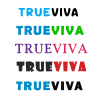How to Build an Influential Freelance Portfolio in Science
In today’s competitive freelance market, building a strong and influential portfolio is no longer optional—it’s essential. For freelancers working in science innovation, a portfolio acts as a living proof of your expertise, creativity, and ability to solve real-world problems through scientific solutions. Whether you specialize in biotechnology, environmental innovation, AI-powered research, or scientific communication, the right portfolio can attract global clients, build credibility, and position you as a thought leader in your niche.
In this guide, we’ll explore how to build an impactful freelance portfolio in science innovation, from showcasing technical expertise to adding credibility with certifications, and positioning your work to appeal to high-value clients across industries.
Long Description (SEO Content)
1. Understanding the Role of a Freelance Portfolio in Science Innovation
A freelance portfolio is not just a collection of past projects—it’s a strategic marketing tool. In the science innovation field, it demonstrates your ability to combine technical knowledge with creativity to create impactful solutions.
Show how you approach complex scientific challenges.
Display your problem-solving methodology.
Highlight innovations and how they benefit industries or society.
SEO Tip: Use keywords like freelance science portfolio, science innovation projects, and scientific expertise showcase in headings and descriptions.
2. Identify Your Niche in Science Innovation
Science innovation is a broad field. To stand out, specialize in a specific area where you can demonstrate authority. Examples include:
Biotechnology and Genetics – Case studies on product development, lab research, or biotech startups.
Renewable Energy Innovation – Projects focused on sustainability and efficiency.
AI & Data Science in Research – AI-based data analysis for scientific breakthroughs.
Medical Device Innovation – Concept to prototype projects in healthcare.
Pro Tip: Clients prefer specialists over generalists in technical fields.
3. Showcase Your Most Impactful Projects
Your portfolio should focus on quality over quantity. Include 3–6 in-depth project examples with:
Project Title & Summary – Clear and professional.
Problem Statement – What challenge were you solving?
Your Role – Researcher, developer, consultant, etc.
Methods & Tools Used – Scientific techniques, software, instruments.
Results – Tangible outcomes, data, patents, publications.
Visual Proof – Images, infographics, research charts.
Example:
Instead of just stating “Worked on renewable energy prototype,” write:
“Developed a cost-effective solar storage system using nanomaterial-based batteries, reducing production costs by 15% and improving efficiency by 22%.”
4. Incorporate Visual and Multimedia Elements
Science innovation is visually engaging—graphs, diagrams, and prototypes speak volumes.
Infographics explaining research findings.
Short videos demonstrating prototypes or experiments.
Interactive PDFs for detailed case studies.
Before-and-after results of your innovation.
These elements increase client engagement and make your portfolio memorable.
5. Demonstrate Technical Skills and Tools
Include a skills & tools section to showcase your capabilities. Examples:
Scientific software: MATLAB, LabVIEW, AutoCAD, SPSS.
Data analysis tools: Python, R, Excel advanced analytics.
Lab equipment handling: Microscopy, spectrometry, chromatographs.
Prototyping tools: 3D printing, microcontrollers, CAD design.
This gives clients confidence in your ability to deliver results.
6. Add Published Work and Certifications
Credibility is vital in science. If you have published work, patents, or certifications, highlight them:
Research Papers & Journal Publications
Conference Presentations
Industry Certifications – ISO, PMP, Lean Six Sigma, etc.
Awards & Grants – Show recognition of your expertise.
SEO Tip: Use keywords like certified science freelancer or published scientific innovator.
7. Tell Your Professional Story
Clients want to know the person behind the innovation. Add an "About Me" section covering:
Your academic background (degrees, research areas).
Your career journey and transition into freelancing.
Why you are passionate about science innovation.
Your vision for the future of your niche.
8. Build Case Studies That Solve Client Problems
Instead of only showcasing projects, frame them as solutions to client challenges:
Challenge: Lack of efficient material for a product.
Solution: Developed a new composite with higher tensile strength.
Impact: Reduced manufacturing waste by 20% and improved durability.
Case studies should speak directly to client goals and how you can deliver them.
9. Use SEO for Your Portfolio Website
If your portfolio is online, make it discoverable:
Use targeted keywords in titles and descriptions.
Optimize images with alt tags like “biotechnology prototype” or “AI research model.”
Create a blog section to share insights on science innovation trends.
Add internal links to related portfolio pieces.
10. Include Testimonials and Client Feedback
Positive feedback builds trust. Ask past clients or collaborators for:
Written testimonials.
LinkedIn recommendations.
Video endorsements for added authenticity.
11. Keep Your Portfolio Updated
Science innovation evolves rapidly—so should your portfolio:
Update projects every 3–6 months.
Remove outdated or less impactful work.
Add new certifications or awards.
12. Promote Your Portfolio on Multiple Platforms
Don’t just rely on your website—promote your portfolio on:
LinkedIn – Share project summaries and achievements.
ResearchGate & Academia.edu – For academic work.
Behance or Dribbble – If you create scientific visuals.
Freelance marketplaces – Upwork, Fiverr, Toptal with portfolio samples.
13. Position Yourself as a Thought Leader
Add authority to your profile by sharing original ideas:
Write articles on upcoming science innovation trends.
Host webinars or podcasts.
Collaborate on open-source projects.
14. Focus on Client-Centric Language
Avoid overly technical jargon—speak in terms of client benefits:
Instead of: "Utilized advanced CRISPR technology in genome editing."
Say: "Developed gene-editing solutions that can reduce disease risk by 40% in agricultural crops."
15. Monitor and Improve
Finally, track your portfolio’s performance:
Monitor visitor analytics.
See which projects get the most clicks.
Adjust based on engagement data.
Conclusion
An influential freelance portfolio in science innovation is more than a visual gallery—it’s a storytelling platform, credibility builder, and client-conversion tool. By highlighting your best work, showcasing measurable results, adding credibility through certifications, and promoting across multiple platforms, you can stand out as a top science innovator in the freelance world.


 by Emily
by Emily




